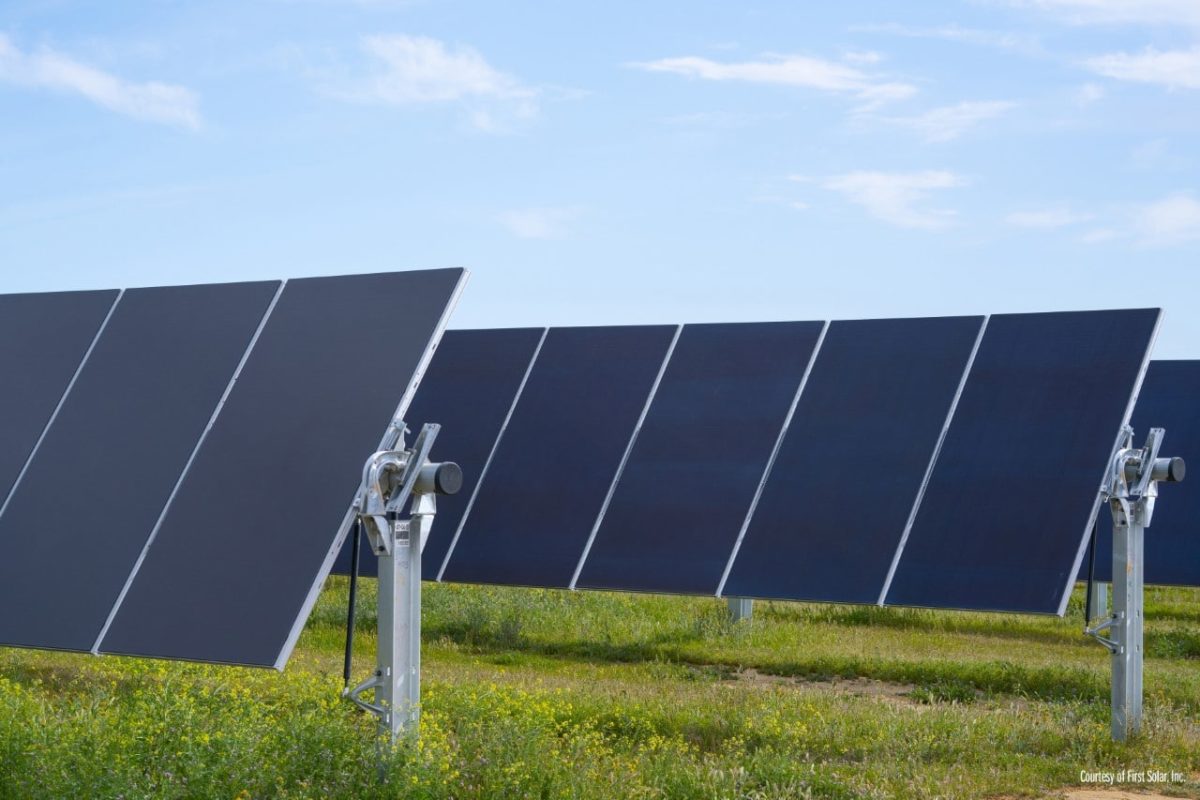From pv magazine USA
First Solar said it plans to invest $684 million in a new, fully vertically integrated photovoltaic thin film solar module manufacturing facility in India. Contingent upon permitting, and pending approval of Indian government incentives that are satisfactory to the Arizona-based First Solar, the facility is expected to be built in the state of Tamil Nadu and commence operations in the second half of 2023.
The planned facility is projected to have a nameplate capacity of 3.3 GWdc.
First Solar produces its thin film PV modules using a fully integrated, continuous process under one roof and uses a Cadmium Telluride (CdTe) semiconductor.
In early June, First Solar said it would invest $680 million to expand its domestic U.S. photovoltaic solar manufacturing capacity by 3.3 GW annually, representing an implied capital expenditure of around $0.20 per watt. The company said it intended to fund construction of its third U.S. manufacturing facility in Ohio with existing cash resources.
All totaled, the company said that its nameplate manufacturing capacity will double to 16 GWdc in 2024.
Well-defined goal
In a statement, Mark Widmar, CEO, said that India offers an attractive market for First Solar in part because the company’s module technology is advantaged in a hot, humid climate. He said the country has “a well-defined goal that will need over 25 GW of solar to be deployed every year for the next nine years.”
The International Energy Agency (IEA) has projected that India will overtake the European Union (EU) to become the world’s third-largest consumer of electricity by 2030, as the country’s population and Gross Domestic Product (GDP) continue to grow. As part of its climate targets, India has committed to ensuring that renewables will make up 40% of its energy portfolio by 2030. The country is forecast to account for almost 20% of the world’s installed solar capacity by 2040.
The facility will be designed using the manufacturing template established for First Solar’s recently-announced factory in Ohio. Combining highly skilled workers with Industry 4.0 architecture, machine-to-machine communication, artificial intelligence, and Internet of Things connectivity, it will feature high degrees of automation, precision, and continuous improvement.
The company said it continues to optimize the amount of semiconductor material used by enhancing its vapor deposition process. First Solar also operates a recycling program that recovers more than 90% of CdTe for use in new modules.
This content is protected by copyright and may not be reused. If you want to cooperate with us and would like to reuse some of our content, please contact: editors@pv-magazine.com.









Solar Panel Manufacturers must ensure that whaever they put into their Panels can be recycled and reused and not end up “in the dump” and Pollute like Electric Batteries)…
While Higher Efficiencies/low(er) Costs and Use of Resources… is desirable…. however if this entails more solid (or other) waste… the whole purpose of using Clean, Green and Sustainable Energy is defeated…. (just like Dead Batteries used in EV’s that Pollute the VERY ENVIRONMENT that these EV’s afe trying to “clean up”..)…
The need of the hour is MUCH HIGHER PRODUCTION to create a sustainable 5TW PV Panel industry to provide 150TW of PV Panels by 2050… but WITHOUT POLLUTION… PLEASE …. BY ENSURING 100% RECYCLING…. 30 YEARS LATER…